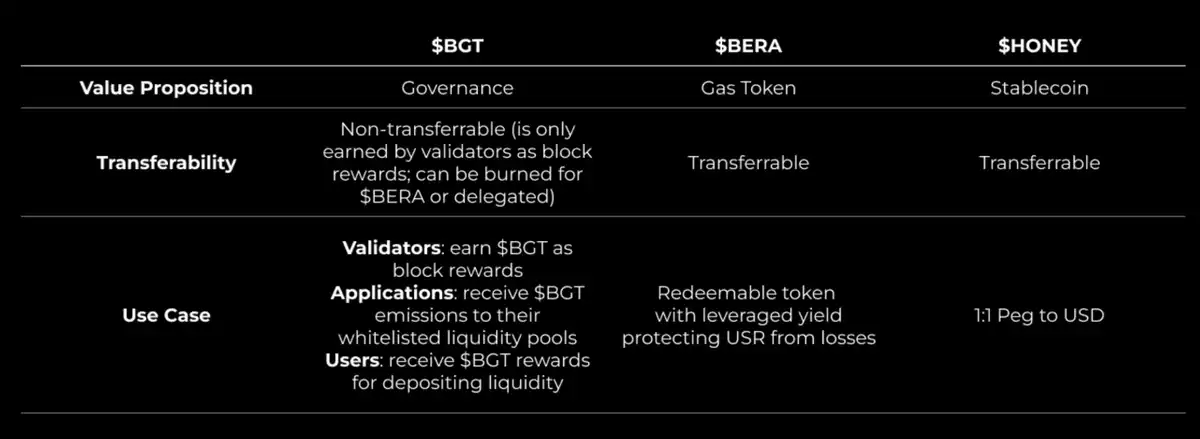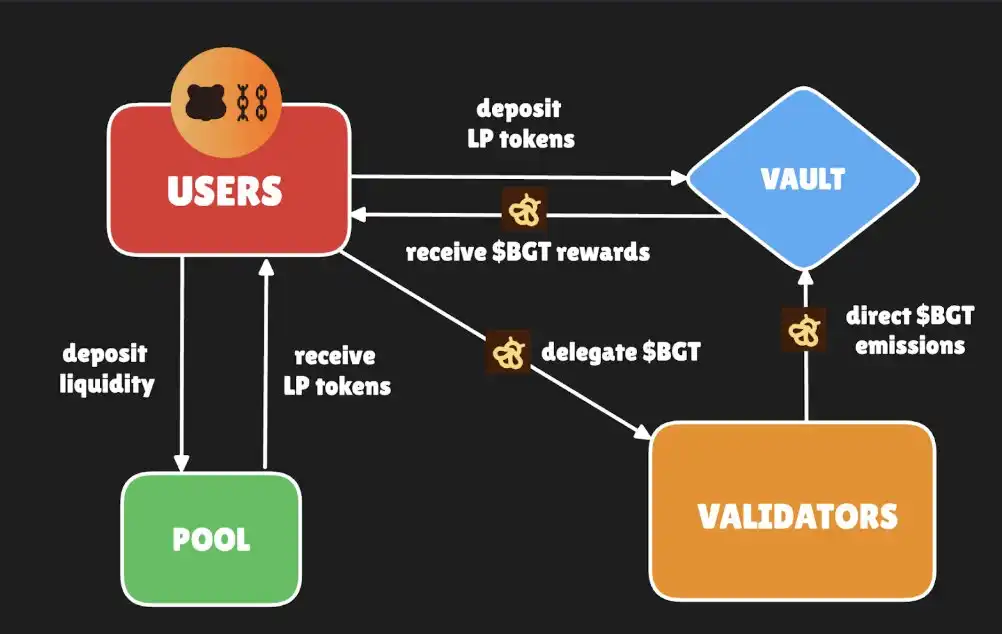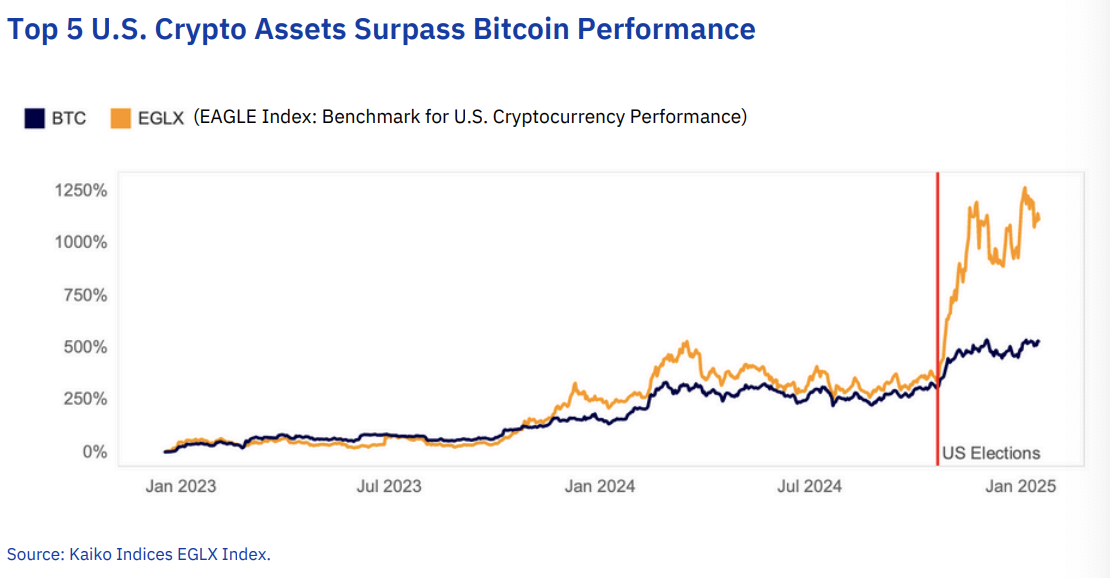Berachain Launches PoL Mining: Can $HONEY "Sticky" Ecosystem Liquidity?
Berachain optimizes the capital efficiency and network security of the DeFi ecosystem through PoL and a Dual-Token Model
Original Article Title: Berachain's Proof of Liquidity: Is It Sticky Though?
Original Article Author: Castle Labs, Web3 Ecosystem Partner
Original Article Translation: DeepSeek
Editor's Note: PoL requires staking assets in a liquidity pool instead of static locking, enhancing network security and DeFi liquidity through liquidity incentives, validator dynamics, and ecosystem synergy for optimized capital efficiency. Currently, Berachain's stablecoin APR exceeds 20%, and with the PoL launch, Berachain is poised to address DeFi inefficiencies and drive ecosystem growth, yet its success will still need to confront challenges such as operational complexity, incentive misalignment, and regulatory uncertainty.
Below is the original content (slightly reorganized for better readability):
With the PoL launch, can Berachain prove that its liquidity mechanism will fundamentally change the DeFi landscape?
Berachain is an emerging Layer1 blockchain, with its core design principle being liquidity proof (Proof of Liquidity, PoL), a consensus mechanism that integrates liquidity provision into network security to empower value for ecosystem applications.
The system adopts a dual-token model ($BERA and $BGT), aiming to build a symbiotic ecosystem of validators, developers, and users (see Honeypaper whitepaper).
With the PoL deployment, we will witness whether Berachain can solve DeFi's inefficiency problem and meet market expectations.
Operation Mechanism of Proof of Liquidity
Unlike traditional Proof of Stake (PoS), PoL requires staked assets to be provided to a liquidity pool rather than statically locked. This mechanism operates through the synergy of the following components:
1. Liquidity Incentives
Users injecting assets into whitelisted DeFi protocols (such as DEX or lending markets) can receive $BGT from a reward vault. These smart contract-controlled liquidity pools will continuously release $BGT, incentivizing users to enhance ecosystem liquidity.
Unlike transferable rewards, the non-transferable nature of $BGT ties its value to ongoing participation, promoting long-term commitment.
2. Validator Dynamics
Validators stake the network's Gas token $BERA to maintain chain security and receive $BGT rewards. Their key obligation is to allocate a portion of the rewards to a designated treasury to guide liquidity toward specific applications. In return, validators may receive protocol fees or native tokens as incentives, forming a symbiotic relationship. This structure highlights PoL's emphasis on mutual benefit.
3. Ecosystem Synergy
PoL builds a triple-incentive system for validators, applications, and liquidity providers. The protocol increases reward competition for validators distributing $BGT, and users then delegate their $BGT to preferred validators. This design of a quasi-resource allocation market achieves network-level optimization of capital efficiency.
4. Capital Efficiency and Security
Traditional PoS locks capital in staking contracts, while PoL uses staked assets to secure the network and provide DeFi liquidity simultaneously. This dual-purpose design, if scaled successfully, could make Berachain a benchmark for a sustainable blockchain economy.
Tokenomics: Dual-Token System
According to the Honeypaper, the Berachain ecosystem is driven by two distinctly functional tokens:
· $BERA: The native Gas token used for transaction fees and validator staking, serving as the foundation of network security and operational costs.
· $BGT (Governance Token): Liquidity providers earn $BGT through market-making, and holders can burn $BGT 1:1 to mint $BERA or influence reward distribution through delegation. Its non-transferrable nature ensures governance remains in the hands of active participants.

This model makes validators rely on $BERA for security, while users guide liquidity through $BGT, creating a positive feedback loop to drive ecosystem growth.
$BGT Liquidity Forecast and Ecosystem Impact
The success of PoL hinges on the distribution and utilization of $BGT. This section extrapolates its potential impact:
1. Liquidity Aggregation
$BGT is expected to flow into DEXs, lending protocols, and other high-yield platforms that have long dominated DeFi transaction volumes. Validators may prioritize treasury rewards, leading to liquidity skew towards established use cases. However, if the reward mechanism is well-designed, emerging areas like derivatives or RWA also have opportunities.
2. Network Activity
Validators maintain blockchain security and earn $BGT rewards by staking the Gas token $BERA on the network. Their key responsibility is to allocate a portion of the $BGT issuance to a reward pool, precisely guiding liquidity injection into specific applications. In return, validators receive income shares, native token rewards, and other diverse incentives from these protocols, forming a symbiotic relationship. This architecture clearly reflects the core pursuit of PoL (Proof of Liquidity) for mutual benefit and incentive synergy.
3. Ecosystem Expansion
The deep liquidity spurred by PoL attracts developers and capital influx. Blocmates' analysis suggests that new projects, from yield aggregators to cross-chain bridges, may flock in, similar to the post-2021 Polygon ecosystem TVL growth of 300% in 18 months.
4. Validator Competition
Validators strategically allocate $BGT rewards to compete for delegation. According to the Berachain forum's disclosure of the Treasury's whitelist mechanism, protocols that can offer the optimal risk-adjusted returns may dominate the early liquidity trend, shaping the entire ecosystem's development focus.

Opportunities and Risks
Opportunities
• Capital Efficiency Enhancement: The dual-purpose staking asset enables PoL to achieve a capital lock-up throughput 15-25% higher than traditional PoS, significantly reducing opportunity costs compared to the Ethereum staking model
• Decentralization Resilience: The distributed allocation of rewards among validators, users, and applications helps mitigate centralization risks
• Long-Term Growth: A liquidity-driven security model can attract institutional-grade DeFi projects, supporting 3-5 years of ecosystem expansion
Risks
• Operational Complexity: The multi-layered mechanisms involving validator rewards, Treasury whitelist, and $BGT delegation may discourage ordinary users, with the first-year adoption rate potentially reaching only 10-20% of the target audience
• Incentive Misalignment: Validator collusion with protocols may distort the flow of $BGT (as demonstrated by the early SushiSwap governance controversy)
• Validator Dependence: Network stability relies on validators transcending short-term self-interest to pursue the collective welfare—a factor that is challenging to predict before the mainnet launch
• Regulatory Changes: The integration design of liquidity and governance tokens may face regulatory uncertainty in jurisdictions such as the United States regarding DeFi regulations.
Summary
In the current challenging market environment, Berachain's PoL launch can be considered one of the few highlights, injecting new excitement into the industry.
This is the first major test of its concept validation, which will verify whether PoL can truly pioneer a new paradigm. Although projects like Initia have had similar attempts at "built-in liquidity," Berachain is the first case to undergo real-world validation.
Will it succeed or fail? Can this "honey" truly create highly sticky liquidity? The answer will soon be revealed!
Original article link: Link to Original Article
Disclaimer: The content of this article solely reflects the author's opinion and does not represent the platform in any capacity. This article is not intended to serve as a reference for making investment decisions.
You may also like
PayPal Expands Portfolio with Solana and Chainlink Aiming for Greater Cryptocurrency Flexibility
Altcoin volumes are ‘more concentrated’ than ever
Altcoin trade volume has returned to pre-FTX levels, but with a shrinking pool of market leaders

XRP price sell-off set to accelerate in April as inverse cup and handle hints at 25% decline
US Treasury Targets Houthi Crypto Wallets, Financial Network
